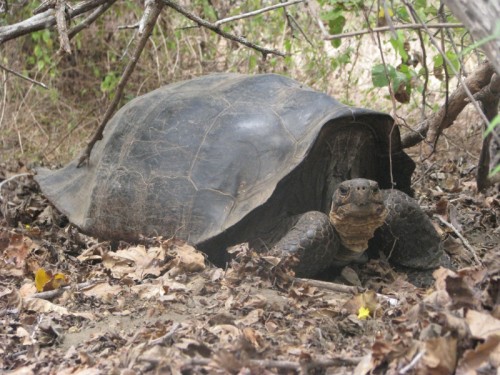
The Galapagos Islands are home to many native and distinct species of flora and fauna. The most well-known group of reptiles unique to the islands are the Galapagos tortoises. These tortoises are captivating because of their massive size compared to the standard turtles found elsewhere. An adult tortoise can have a shell length of over one meter and weigh more than 200 kilograms. One species of these Galapagos tortoises, native to the island Floreana, has been thought to be extinct for the past 150 years. However, there is hope for the Floreana tortoises because genes from this species are still present in living tortoises.
Gisella Caccone, a geneticist at Yale University, has been researching the Galapagos tortoises since 1994. Throughout several expeditions to the Galapagos Islands, her research team has drawn blood from many different tortoise species. She explained that “through modern techniques of DNA analysis, the DNA of each species was identified.” It was discovered that each tortoise had a set of DNA markers that were specific to its native island. Similar DNA analysis techniques were used on extinct tortoises, which are kept in museums for research.

Isabela, one of the largest islands in the Galapagos, houses a volcano on its northern end called Wolf Volcano and presents a compelling genetic discovery. After DNA mapping, it was found that many of the tortoises living on and around it appear to be hybrid species, with DNA markers from two or more different species of tortoises. These hybrid tortoises possess the DNA markers for the species native to Isabela island as well as the markers for the species native to Floreana island, which was surprising because the species of tortoises from Floreana were thought to be extinct. In fact, for some tortoises, approximately 50% of their DNA was from the Floreana species, which means that one of their parents was a purebred Floreana tortoise. Also, some of the hybrids were as young as 10-15 years old, meaning that these purebred Floreana tortoises in the parent generation were alive recently. Now, by using these hybrid tortoises with purebred Floreana ancestors, it is possible to save this species once thought to be extinct.
Caccone and her research team will be returning to the Galapagos Islands in December. Their goal for this expedition is to identify the Wolf Volcano hybrid tortoises that have a purebred Floreana as one of their parents. Ultimately, they plan to collect hybrids with 50% of their DNA from the Floreana species and begin a selective breeding program to bring back the Floreana species. “By cross-breeding the hybrids, it is estimated that in about four generations, the hybrid tortoises will have 90% of their DNA from the Floreana species,” Caccone said. If this is accurate, then the Floreana tortoises will be saved from the brink of extinction.

